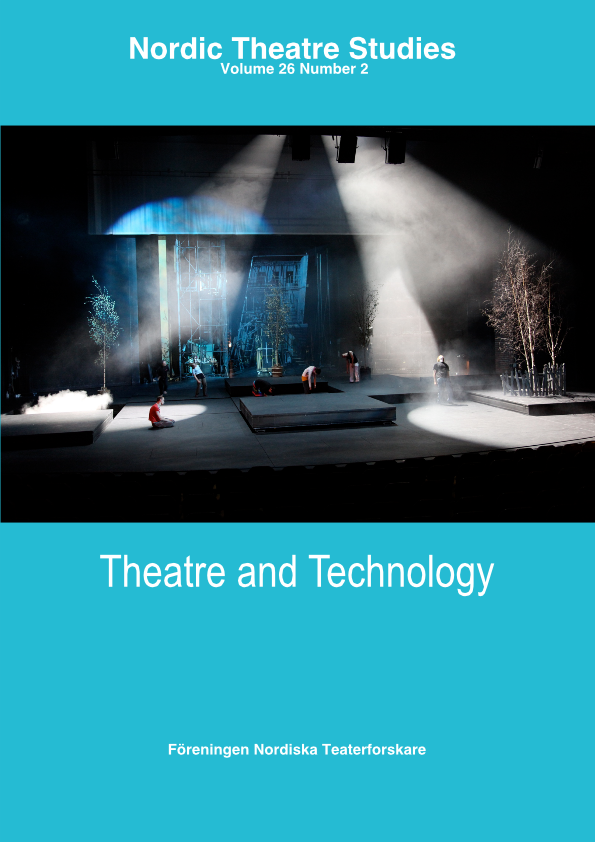The Disenchantment of the Wonderful - A Doll’s House and the Idealist Imagination
DOI:
https://doi.org/10.7146/nts.v26i2.24311Keywords:
imagination, Henrik Ibsen, Idealism, Romanticism, philosophyAbstract
During the course of the nineteenth century, the notion of imagination under- went a radical redefinition. From being the highest, divine, power of man to being subjected to a growing pathologization and degradation, the redefinition of imagination played a central role in the transition from idealism and roman- ticism to the emerging modernism and realism. Henrik Ibsen’s A Doll’s House (1879) may be read into this particular context with its ‘disenchantment’ of the ‘wonderful’ – a word which Georg Brandes termed the very keyword of romanticism. Focusing on the specific Scandinavian context, where idealist aesthetics continued to be particularly strong, I will examine A Doll’s House from the perspective of the contemporary spectator in the context of an on-going Nordic aesthetic dispute. The contemporary Scandinavian reviews will serve to bear evidence of this dispute. In the article, I analyse how the play thematizes imagination and employs recurrent references to idealist culture in order to disenchant the romantic imagination of the wonderful. The analysis will focus in particular on the representation of the characters of Nora and Helmer, but also comes to implicate the spectator of the play.References
M. H. Abrams, The Mirror and the Lamp: Romantic Theory and the Critical Tradition, Oxford University Press, London 1971.
Sune Auken et al., eds., Dansk Litteraturs Historie, vol. 2, Gyldendal, København 2008.
Herman Bang, Realisme og Realister: Kritiske Studier og Udkast, Det danske Sprog- og Litteraturselskab, Borgen, København 2001.
Georg Brandes, “Adam Oehlenschläger: Aladdin” in Samlede Skrifter, vol. I, Gyldendalske Boghandels Forlag (F. Hegel & Søn), Kjøbenhavn 1899.
Edvard Brandes, Dansk Skuespilkunst, P. G. Philipsens Forlag, København 1880.
Edvard Brandes, “Henrik Ibsen’s A Doll’s House at the Royal Theatre”.
Johanne Luise Heiberg, “Er Skuespilkunsten En Moralsk Berettiget Kunst?” in Et Liv Gjenoplevet i Erindringen, Aage Friis, ed., Gyldendal, København 1944.
Henrik Ibsen, Four Major Plays: A Doll House, The Wild Duck, Hedda Gabler, The Master Builder, Rolf Fjelde, trans., New American Library of World Literature, New York 1965.
Henrik Ibsen, A Doll’s House, James Walter McFarlane, trans., in Four Major Plays, Oxford University Press, Oxford 2008.
Søren Kierkegaard, The Sickness Unto Death, Princeton University Press, Princeton, N. J. 1980.
Søren Kierkegaard, Training in Christianity, Princeton University Press, Princeton 1967.
Søren Kierkegaard, Om Begrebet Ironi, Søren Kierkegaard Forskningscenteret, Gads Forlag, København 1997.
Søren Kierkegaard, Either/Or, Alastair Hannay, trans., Penguin Books, London 1992.
Richard Kearney, The Wake of Imagination: Toward a Postmodern Culture, Routledge, London 1998.
Carl Henrik Koch, Den Danske Idealisme 1800-1880, Gyldendal, København 2004.
Robert Neiiendam, Det Kongelige Teaters Historie, vol. III, Pios Boghandel, København 1925.
Joe Perry, Christmas in Germany: A Cultural History, University of North Carolina Press, Chapel Hill 2010.
Fredrik Petersen, “Henrik Ibsen’s Drama A Doll’s House” in Af- tenbladet, 9 and 10 January 1880.
Richard Sha, “Toward a Physiology of the Romantic Imagination" in Configurations, vol. 17, 2009.
Friedrich Wilhelm Joseph von Schelling, “System Des Transzendentalen Idealismus” in 20 Schellings Werke, vol. II, C. H. Beck, München 1965.
Frederik Schyberg, Dansk Teaterkritik, Gylden- dal, København 1937.
Fritz Wefelmeyer, “Raphael’s Sistine Madonna: An Icon of the German Imagination from Herder to Heidegger” in Text into Image: Image into Text, Jeff Morrison and Florian Krobb, eds., Rodopi, Amsterdam 1997.
Nicolai Wergeland, Retfærdig Bedømmelse Af Henrik 22 Wergelands Poesie Og Karakter, Gyldendal, Oslo 1995.
Erik Østerud “A Doll’s House: Ibsen’s Italian Masquerade” in Theatre Studies, vol. 10, 1997.
Downloads
Published
How to Cite
Issue
Section
License
The copyright belongs to the authors and Nordic Theatre Studies. Users can use, reuse and build upon the material published in the journal but only for non-commercial purposes. Users are allowed to link to the files, download the files, distribute the files on a local network (preferably by links), upload the files to local repositories if their institutions require them to do so, but not republish the files without proper agreements with the journal and the author.

